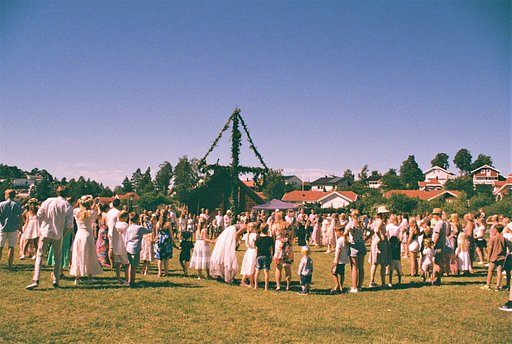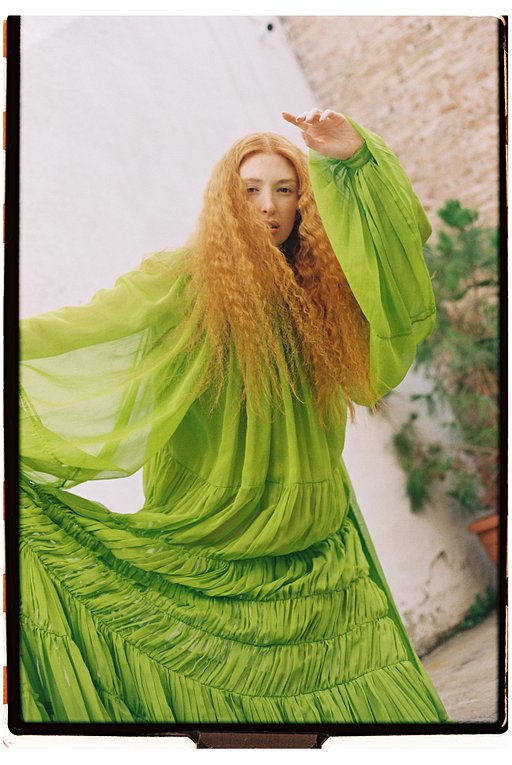Climate Crises and Analogue Photography. Awareness Through Film.
4 14 Share TweetWhen it comes to analogue photography and the environment, we often think about the ecological complexities involved. But the practice has evolved over the years to be more friendly to the environment.
In a world where it can seem as if the voices of ordinary people are ignored, it is crucial to find new ways to communicate about pressing issues such as climate change. For today's In-Depth article we are exploring the work of photographers who have approached the issue through creative analogue practices.

The four elements: water, earth, air and fire are intrinsically connected. Yet individually they each represent their own challenges as they symbolize the steps that we must take in order to fight climate change.
Water
Together with UNICEF through a powerful series of advertisements, Happiness Saigon , an award-winning Creative Consultancy Agency based in Vietnam, has worked with photographer Teo Chai Guan on a series of portraits of children living near areas with high water pollution.

At first, if you don't know how these portraits were made, then you might assume that an alternative analogue process, such as film soup, was involved. However, it is even more astonishing to learn that the film was processed in a very standard way. Developer, water, fixer and rinse. It is disconcerting to know that the element that altered the pictures so much was water that was collected next to these children's homes.
"If impure water does this to a picture, imagine what it does to the health and well being of a child. Clean water matters."
The results are haunting images of those children and we can only imagine the harmful, long-term damages to their health that will come from being exposed to this contaminated water.
Air
Greenhouse gasses are the main element of manipulation in photographer Mads Madison’s work Global Warming Series. In his work he experiments with bleach, water, and solution and then simulates a greenhouse environment:
"I used an old Gummi bear container and I injected chloride bleach, water and hydrogen peroxide between the backing and the emulsion with a syringe. And then I left everything in the sun for a couple of hours/days."
The closed environment and the chemicals do the rest. By recreating what the greenhouse-gas emissions are doing to the Earth, Madison's work evokes what it would be like to live in such a land. The small format of the polaroid has a relatively limited surface area for the chemicals to work. As soon as the injection comes into contact, the ripping effects rapidly consume the emulsion.
One could draw a comparison between us and those polaroids. We coexist in a delicate balance with the natural world and the effects of our impact on the Earth since the industrial revolution until now have been devastating. In geological terms this has happened over a relatively short period of time, just as rapidly as the polaroids were tainted.
Fire
What will the planet we all know as the blue planet look like if we cross the point of no return and our fragile ecosystem collapses? The "surreal" landscape images, depicted in the series Melting Paradise, might not be so surreal after all. Bernarda Conic, A.K.A. nibera_35mm, is a Slovenian artist and author of this work. Through the use of thermal and chemical alteration, Nibera, "symbolizes an Earth where the average temperature of the atmosphere and oceans are increasing."
The alteration that is made by fire on the negatives, through the cooking process of souping the film, destroys the chemical balance of the film emulsion.

Earth
Many of the most striking images of climate change come from the Arctic region. We have all seen the heartbreaking photos of polar bears stranded on melting sea ice. It is in these regions that the delicate ecosystem of the Earth is most dramatically affected and the signs are striking.

"Canada is warming at almost twice the global rate; a 2°C increase globally means a 3-4°C increase for Canada, and Northern communities have been feeling the effects of these changes for decades now." - Ella Morton
Employing the Mordançage and film soaking processes, Ella Morton aims "to communicate how vital our relationship to the landscape is, regardless of where we may live, and how this relationship has become urgently at risk as the planet warms."
In Morton's work, the Mordançage almost resembles the iceberg formation. The technique, which requires time and patience for the formation of the perfect folding of the silver veils, is a gorgeous visual reminder of Arctic life and its delicate nature.
These incredible works are a reminder that as creatives we can use our skills to give voice to the issues that are close to our hearts. And when we work for something we believe in, the quality and intensity of our work will rise.
It is obvious now that the actions of a single person is not enough, but the actions of many can result in a greater change. Strength is in numbers and we must believe that change will come.
If you feel overwhelmed by the climate crisis, consider researching activities and programs where you can volunteer to help. Share your project and ideas with the community
written by eparrino on 2022-05-15 #culture #people #global-warming #climate-change #experimental-photography






















4 Comments